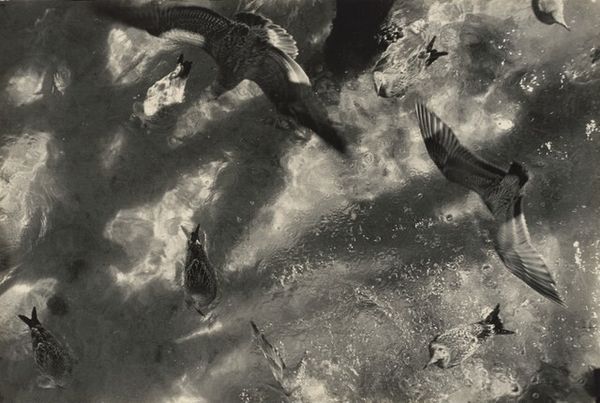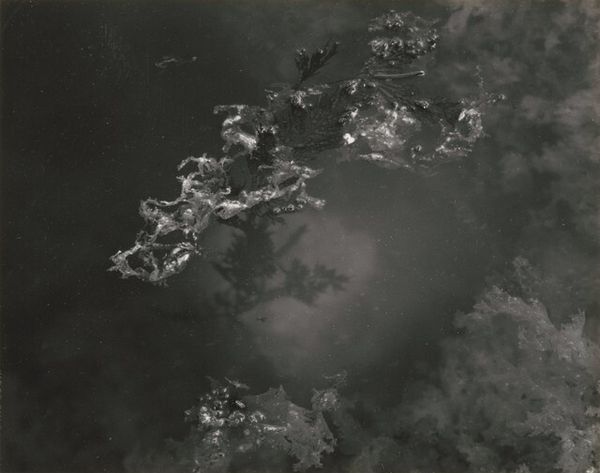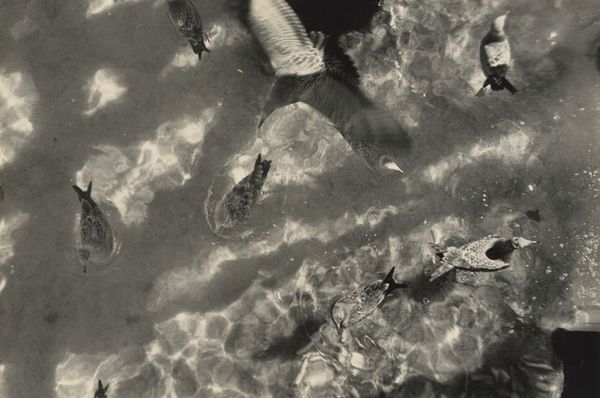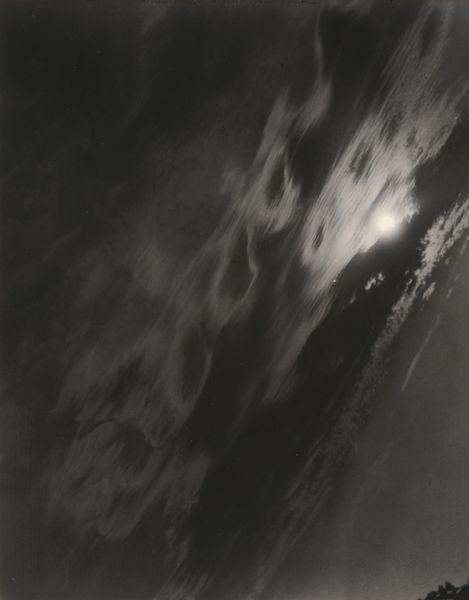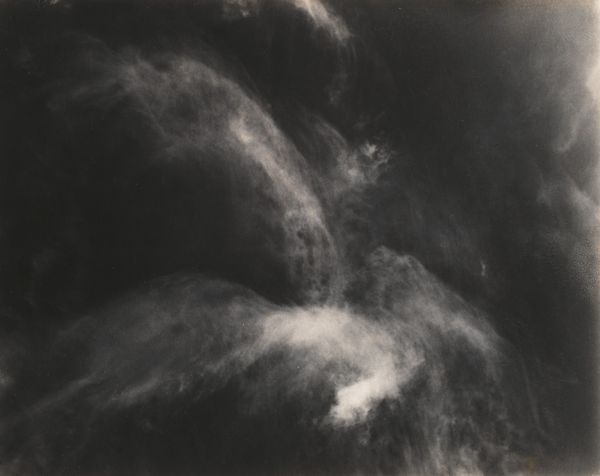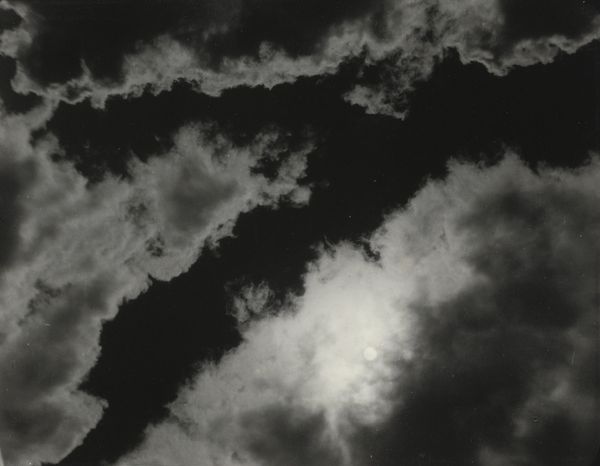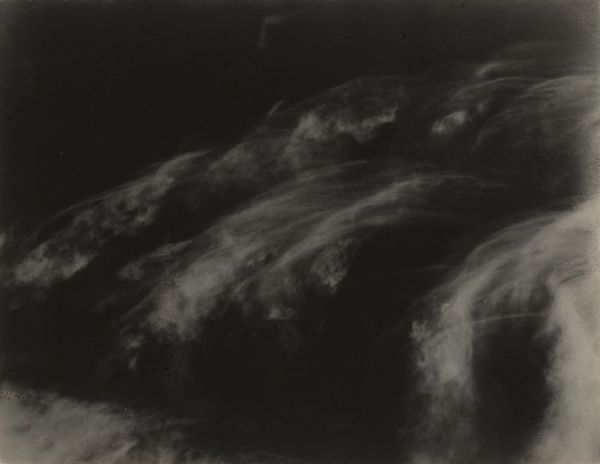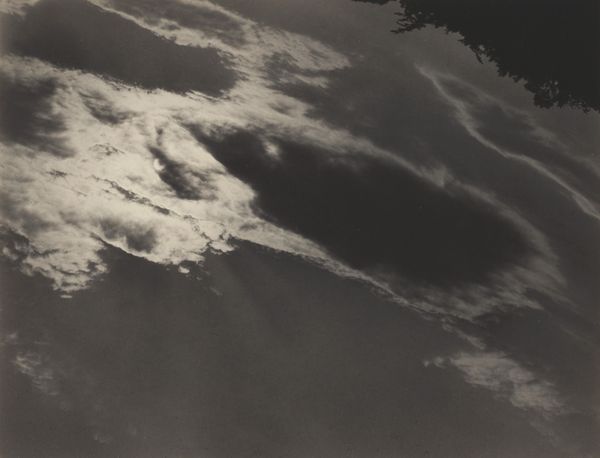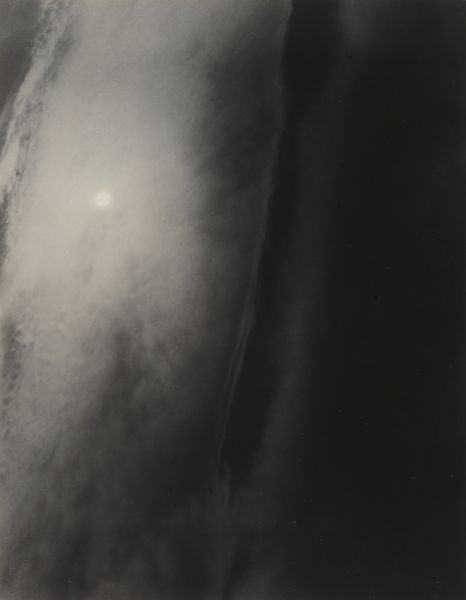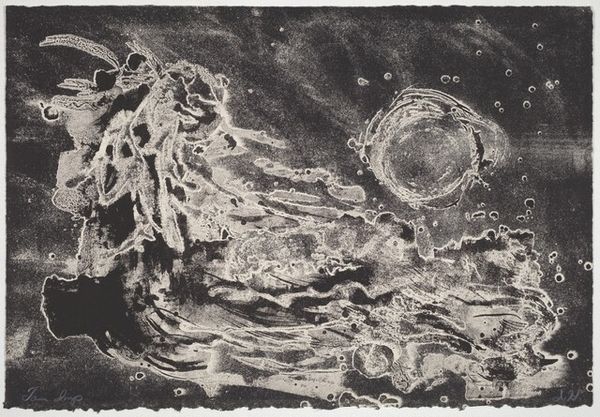
photography, gelatin-silver-print
#
still-life-photography
#
landscape
#
photography
#
gelatin-silver-print
Dimensions: image/sheet/mount: 22.5 × 33.5 cm (8 7/8 × 13 3/16 in.)
Copyright: National Gallery of Art: CC0 1.0
Curator: This captivating gelatin silver print, "Seagulls, Provincetown," was created in 1949 by Sid Grossman. It offers a dynamic snapshot of seagulls interacting within their watery habitat. What's your immediate response to this image? Editor: The immediate impact is one of slightly unsettling beauty. It’s visually chaotic and elegant. The high contrast and aerial perspective lend a sense of drama to the ordinary scene of birds feeding. I can almost hear their squawks echoing in that space. Curator: It’s interesting that you find it unsettling. Grossman was deeply invested in the Photo League's mission to document the everyday struggles and triumphs of ordinary people. Even in a seemingly simple scene of nature, one could argue that the chaotic scramble for resources depicted mirrors larger social inequalities and competition for survival. Editor: Yes, I see that interpretation. Symbolically, water often represents the unconscious or the emotional realm, and birds can symbolize freedom or a messenger. In this case, the frantic energy of the birds combined with the dark, swirling water gives a primal feeling to it all—survival instincts laid bare. Curator: Absolutely. Consider Grossman's political consciousness; during this time the art world was undergoing tremendous shifts. His photography offered a stark alternative to the prevailing abstract expressionism, insisting on realism and engagement with the social landscape. Furthermore, the choice of black and white heightens the stark contrast and can allude to an urgency surrounding issues facing marginalised groups. Editor: And perhaps this image echoes a darker interpretation of that post-war American Dream, moving past easy idealization. The gulls, jostling and competing for food, could act as surrogates for those left out. The recurring images of birds in art history appear so often as indicators of either hope or doom. These specific gulls certainly lend themselves to this second interpretation. Curator: Well said, it brings the historical narrative to the forefront, it is important to analyse not just an artwork's formal quality but also it's socio-political implications when presented in an era that was rife with disparities. Editor: Ultimately, Grossman's composition captures a potent truth about life and its relentless, at times disturbing beauty. Curator: It certainly does offer much to ponder regarding its artistic as well as contextual merits.
Comments
No comments
Be the first to comment and join the conversation on the ultimate creative platform.
